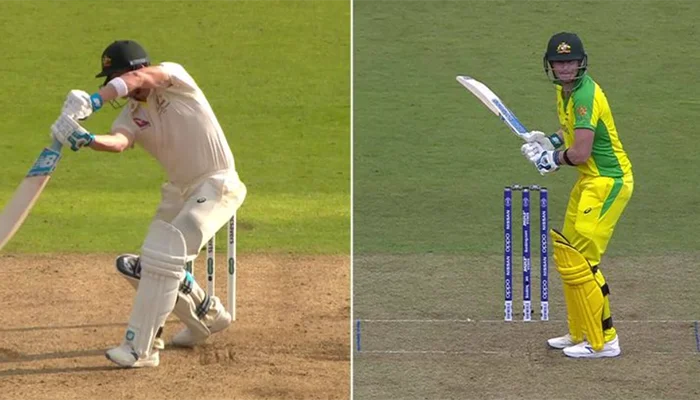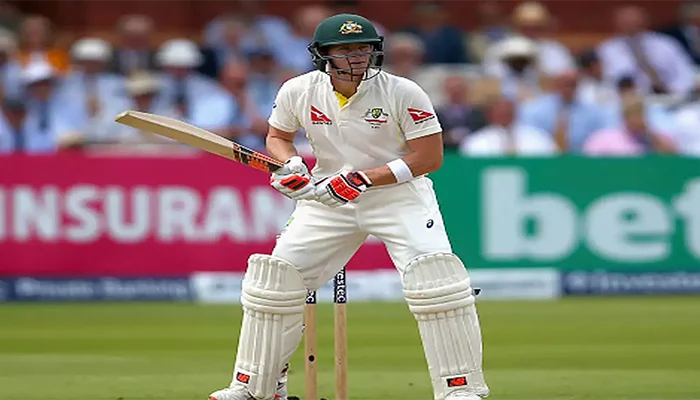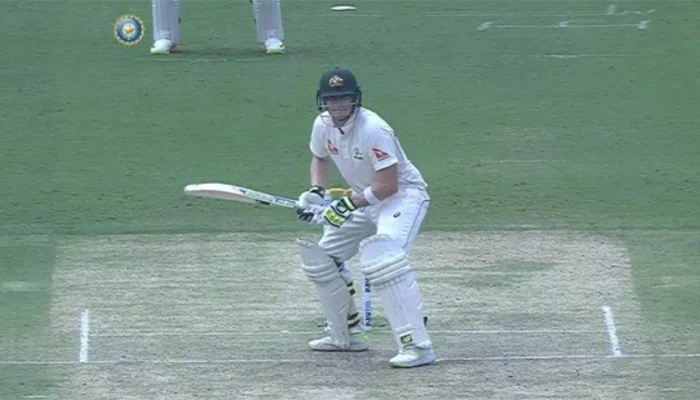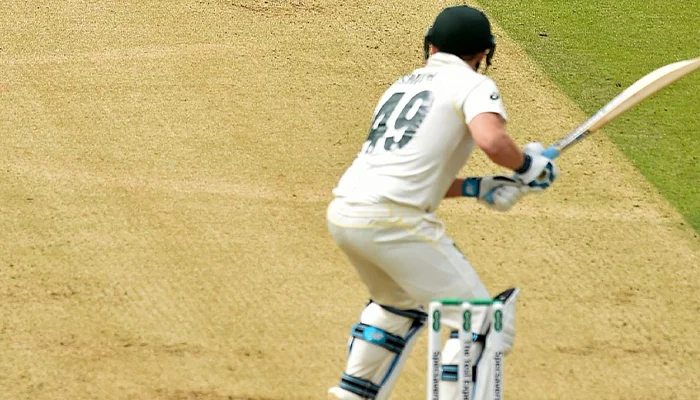What's the Secret Behind Steve Smith's Unusual Stance and Remarkable Ability to Score Runs?

(Steve Smith batting with his unusual stance in the 2019 Ashes and ODI World Cup)
A young boy from the Australian team who had a dream of replacing the great Shane Warne in the team but ended up being the Greatest Test batter of this generation. Yes, the story is about Steven Peter Devereux Smith who has been Australia’s best batter in the last decade. However, the matter is all about his unusual stance and the way he bats against some of the best fast bowlers in the world and still manages to make them look ordinary. To date in his Test career, he has managed to score 9685 runs from the 195 innings played while maintaining an average of 56.97 along with having 32 centuries to his name. Now, we will be discovering the fact that this man has reached the top of the world despite not even having a conventional stance.
Steve Smith coming in as a replacement for Shane Warne
In 2010, Australian cricket was looking for a potential replacement for Shane Warne after his retirement and this is where Steve Smith came into the plans because of the action resemblance and even the way he played in the domestic matches. Being a young all-rounder, he used to bowl the tough overs alongside batting at six or seventh position. Steve Smith marked his entry into international cricket with a dual debut in February 2010, showcasing his leg-spin prowess in a Twenty20 International against Pakistan in Melbourne, followed by his One Day International debut against the West Indies in the same city. His talent shone brightly during the 2010 ICC World Twenty20 in the West Indies, where Australia emerged as runners-up to England.

(Steve Smith during the 2010 ICC T20 World Cup)
Smith's stellar performance saw him claim 11 wickets in seven matches, ending as the tournament's second-highest wicket-taker. His Test debut came at Lord's in July 2010, against Pakistan in the 2010 Test series in England. Initially selected for his bowling, Smith displayed his batting prowess in the second Test, contributing a crucial 77 runs in the second innings. Subsequently, he played a significant role as a batsman in the 2010–11 Ashes series, cementing his spot in the Australian lineup. But after a few test matches, he was dropped from the side because of not contributing much with the bat and hence it was a major setback for him.
Comeback in the India tour and Ashes
After getting clarity from the Australian board that he was dropped from the team because of his inability to score well, Steve Smith started focusing much more on his batting and made the decision to go into the team as a proper batter. In the tour against India, he managed to play well and scored 161 runs from the 4 innings played and even scored 92 runs in an inning. That series showed the world that this young bloke can play and has the ability to hold the Australian innings well despite batting down the order and having a different stance.

(Steve Smith’s batting stance during the 2013 Ashes tour)
After this, the Australian team went to England for an Ashes series and this was the time when Steve Smith became Australia’s permanent player because of how he scored runs for them. During his maiden century against England at the WACA, he changed his batting stance in between the innings where he used to stand in a classic side-on position, lifting his bat uniquely towards the gully. Apart from this, his batting technique was mostly traditional, favouring the side-on approach. This stance formed the basis of Smith's batting skills, enabling him to play shots accurately. For the cricketing world, seeing someone scoring runs with this stance was something new to watch.
Batting stance during the 2014 Indian tour and 2015 Ashes
With the 2013 Ashes tour, Steve Smith was already a batting sensation in the world and everyone was trying to see how his unconventional stance was helping him to score runs well. During the 2014 Test matches against India, he was the top run scorer along with having 4 centuries to his name and the Indian bowlers were finding it tough to get him out. Even during the 2015 ODI World Cup, his knockout innings showed how good he is under pressure and how he has been a constant headache for the team who have got no idea how to get him out.

(Steve Smith’s batting stance during the 2015 Ashes tour)
Continuing his form well, he even went on to trouble the England pacers in their own conditions and was easily playing the duo of Stuart Broad and James Anderson who were absolutely a nightmare for the batters on a green pitch. Smith even went on to score a double-century for his team and this marked a notable shift in Smith's approach, veering away from convention. He departed from the traditional side-on stance, opting instead for a stance where his left shoulder angled towards mid-wicket and his right shoulder was prominently visible to the bowler. His foot positioning deviated from the norm, with his front foot aimed towards the bowler and his back foot pointing towards the point.
Changing the stance in the 2017 tour of India and England
With the domination in England and other countries, Steve Smith finally had the assignment of playing in the home Ashes as a captain along with having the India tour where he had the biggest challenge of going against the spin duo of R Ashwin and Ravindra Jadeja at the spinning pitches of India. However, here too he came out at the top and dominated the Indian team at their home with 3 centuries and 499 runs in 8 innings which also included a record century at Pune where the pitch was turning from the first day itself for the bowlers.

(Steve Smith’s stance during the 2017 Border-Gavaskar Trophy)
Coming to the 2017 Ashes series at home, Steve Smith again dominated the English bowlers on the Australian tracks with his unorthodox technique and gave them an absolute shocker of a series by being the top run-scorer of the series and bashing the bowlers well. Smith's stance remained faithful to the fundamentals, with his chest squarely facing the pitch, yet his feet exhibited a subtle dance of contradiction, refusing to align as convention dictates.
2019 ODI World Cup and Ashes
In 2019, Steve Smith returned to cricket after a year of absence because of the ban he suffered because of the Sandpaper scandal. Coming to the ODI World Cup, it was an average season for him and he wasn’t able to do well until the Semi-Finals where he was the lone warrior against the England team in tough conditions. Talking about the 2019 Ashes, it was the best tour by a visiting batter in the England conditions as because of him, Australia managed to draw the Ashes 2-2 and was able to retain the trophy to take it back to Australia.

(Steve Smith’s batting stance during the 2019 Ashes tour)
In the 7 innings played by Steve Smith, he managed to score 774 runs while maintaining an average of 110 and was the top run-scorer of the series for the 3rd consecutive time. Smith seems to be at his very best right now. He's not just standing still at the crease. When he faced Woakes, he was turned to the side a bit, and when he faced Archer, he was facing more forward. But in both cases, he wasn't staying in one place for long. He kept moving, adjusting, and reacting, showing how skilled he really is. It's like he's always on the go, never stopping for a moment, always ready for whatever comes next.
Which is the correct stance for Steve Smith?
Since the year 2020, Steve Smith hasn’t been at his best while batting for the Australian team because of injury reasons and after changing his stance a bit. However, in an interview, Steve Smith was asked about his stance and how he manages to make the bowlers look club level despite having this unorthodox technique. To this, he said:
“It depends on who’s bowling, how is the wicket playing, how I gonna score and stuff like that or how people are trying to get me out, probably that determines how open I am or otherwise how closed I am. But my general stance where my back foot is going to almost off stump or maybe even outside at stages, I know that anything outside my eye line isn’t hitting the stumps. For me, you shouldn’t get out if the ball is not hitting the stumps, so that is just a trick from me when I first started doing it, just limiting the ways I get out. Sometimes, I get trapped in front but I’m okay with that at stages, knowing that if it is outside my eye line, I don’t need to try and play the ball, I can just leave that.”
Smith's stance today mirrors that of his formative years in 2013. He's noticeably more side-on and exhibits a greater sense of stillness at the crease. Explaining his shift, he highlighted how this adjustment helps him avoid chasing balls outside his off stump and allows him to feel more compact in his setup. Early indications suggest that Smith's recent technical adaptation will yield favourable outcomes for him, hinting at a promising trajectory for his performance.

Comments
Sign up or log in to your account to leave comments and reactions
0 Comments